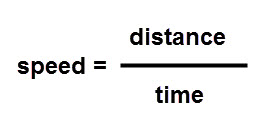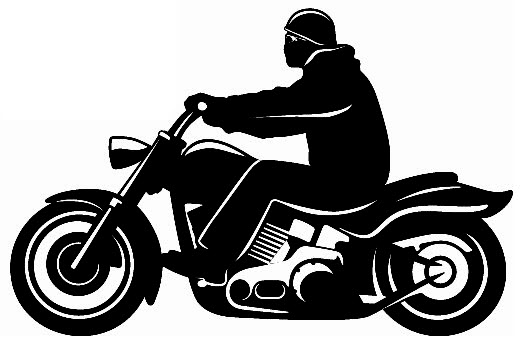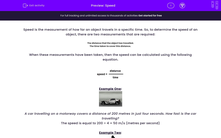Speed is the measurement of how far an object travels in a specific time. So, to determine the speed of an object, there are two measurements that are required:
The distance that the object has travelled.
The time taken to cover this distance.
When these measurements have been taken, then the speed can be calculated using the following equation.

Example 1

A car travelling on a motorway covers a distance of 200 metres in 4 seconds.
How fast is the car travelling?
speed = distance ÷ time
Distance = 200 metres
Time = 4 seconds
So all we need to do is substitute these numbers into our equation to solve:
Speed = 200 m ÷ 4 s = 50 m/s (metres per second)
Example 2

A motorbike travels a distance of 150 miles at an average speed of 60 mph.
How long does this journey take?
This time, we need to rearrange the equation to make time the subject:
speed = distance ÷ time
becomes
time = distance ÷ speed
And then we just substitute our numbers into the correct places:
Distance = 150 miles
Speed = 60 mph
Time = 150 mph ÷ 60 miles = 2.5 hours
We can double-check our answer with a reverse calculation:
The speed is equal to 150 ÷ 2.5 = 60 mph (miles per hour)
.jpg)
Metres per second (m/s) is a commonly used unit to measure speed, but you are probably more familiar with miles per hour (mph) or kilometres per hour (km/h) when referring to the speed of cars. All of the units for speed are a distance unit divided by a time unit.
Are you ready to have a go at some questions now?








